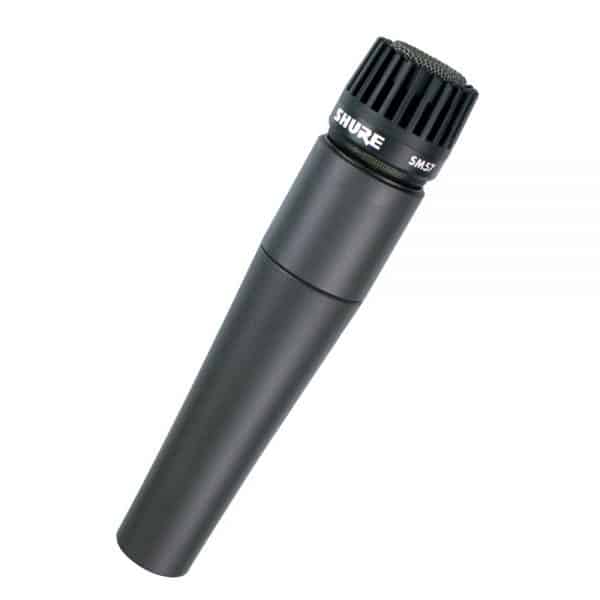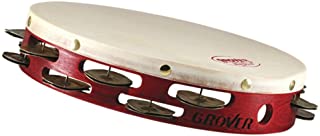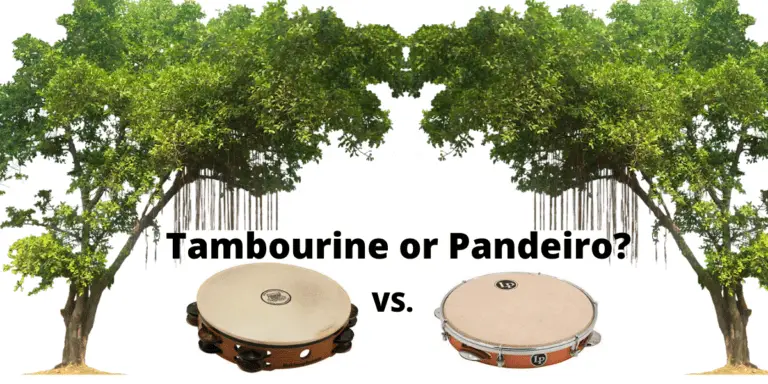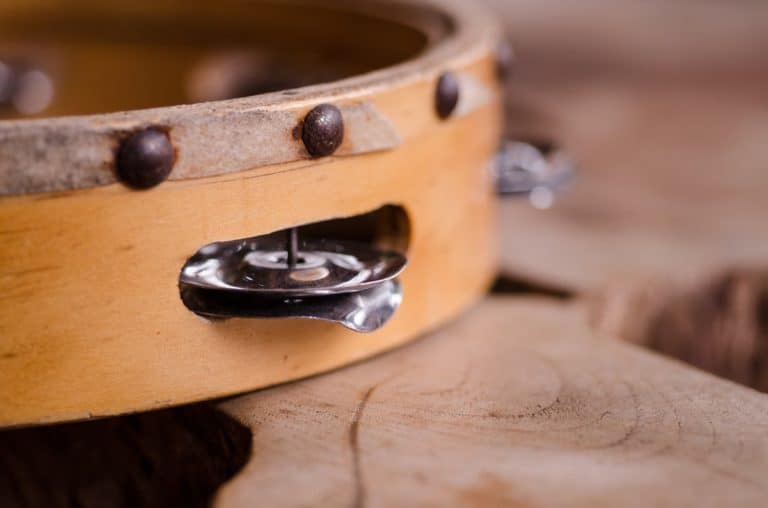Tips for Recording Tambourine [Instruments – Microphones]
The tambourine is a handheld percussion instrument that goes back many years, all the way back to ancient history. You will find this type of musical instrument in most forms of music from all around the world. It is used in rock music, pop music, classical music, and jazz, to name a few, but the list goes on.
While it is an essential instrument used for various music forms, many musicians have difficulty figuring out How to Record Tambourine with excellent sound quality. Recording the tambourine or any hand percussion instrument, for that matter, is often more challenging than it would initially appear to be.
Often you will find that the cheapest tambourin from the thrift store ends up being the best sounding example on your recordings
The Best Microphone to Use
It is probably no surprise that the tambourine’s sound on recordings will depend mainly on which type of microphone you use. When you choose which microphone to use, there are essential things to keep in mind.
The best microphone for recording a tambourine is the Shure SM-57 Cardioid Dynamic. At the cheaper end of the market, they provide superb stereo recording, with clarity and balance.
This is the go-to musical instrument performance mic across the entire industry and can handle being sat right in front of a guitar amplifier, directly on a snare drum or in front of your tambourie or pandeiro. You’ll get no distortion no matter what level you are picking up.

The best microphone to use will pick up a wide range of frequencies. Many of the condenser microphones can’t handle the tambourine’s sound pressure level when you play close.
A dynamic microphone will have no issue picking all of these various sounds up and is the best microphone for the job. A ribbon microphone, which is a type of dynamic microphone, will also do great.
Distance from the Microphone
Playing the tambourine directly in front of the microphone will highlight the different sounds and tones. The closer you play to the mic, the louder it will sound in your recording. Getting too close to the microphone, however, may cause it to sound distorted.
It will also be an immense help if you keep in mind that the closer you stand to the mic, the louder the tambourine will sound compared to the other instruments.
It is best to record by playing the tambourine close to the microphone but not directly in front of it.
Try giving it a test run from different places within close vicinity of the mic to figure out where you should stand while you’re playing it.
You’ll find a good metre or two back from the mic will be optimal, and you’ll have to do less in the mix to get it positioned correctly
Which Type of Tambourine is Best for Recording?
The type of tambourine you use will also play a significant role in how the recording sounds.
All are crafted differently and made to have a unique sound. The best tambourines should be lightweight and comfortable to hold. Ensuring both of those things will give you the best possible sound.
There are essential things to consider before deciding on which one to use.
1. Quality
All quality-built music instruments will make the best sound and last longer than cheaply built instruments. The tambourine is no exception to that rule. To ensure you produce the best sounding recordings possible, choose one constructed well and crafted with the best possible materials. Using a cheap tambourine will more than likely never create the sound you’re hoping for in the recording.
2. Head
If you decide on using a tambourine with a ‘head,’ look for one made with synthetic or natural material. Natural crafted material will give you the best percussion sound but requires upkeep to keep the material in good working order. A head built with synthetic material doesn’t have quite the same pleasing sound but doesn’t require much care.
To keep the instrument in the best working condition with the best sound, replace the head when it begins getting worn from use.
3. Shell
The flat wood hoop of the tambourine is called the shell. For the best sound, choose one that is firm and sturdily built. A high-quality, built instrument will always give you the best possible sound, whether recording or playing for an audience.
4. Jingle
The thin round plates of the tambourine are called the jingles. They are made from various compounds to produce a range of sounds. Choose your tambourine constructed with jingles of high-quality material.
Depending on which type of music you play, you may want to choose from different styles and use tambourines with jingles made of many different material types. Generally, you will find crafters with the most experience make the best sounding jingles.
Three of the musician favorites and top-rated tambourines to use while recording is listed below:
- Meinl Percussion Recording-Combo Wood Tambourine [See Price on Amazon]
- Rhythm Tech Drum Set Tambourine [See Price on Amazon]
- Latin Percussion Worship Tambourine [See price on Amazon]
Tambourines are an essential instrument for most types of music.
Most musicians will even agree that it’s a vital instrument that every band to use.
Finding the best available tambourine, microphone, and proximity to standing to the microphone will produce the best sounding recording possible.




![Best Percussion Instruments For Kids [That you can play too]](https://cdn-0.coolpercussion.com/wp-content/uploads/2020/09/woman-4010110_1920-768x512.jpg)

